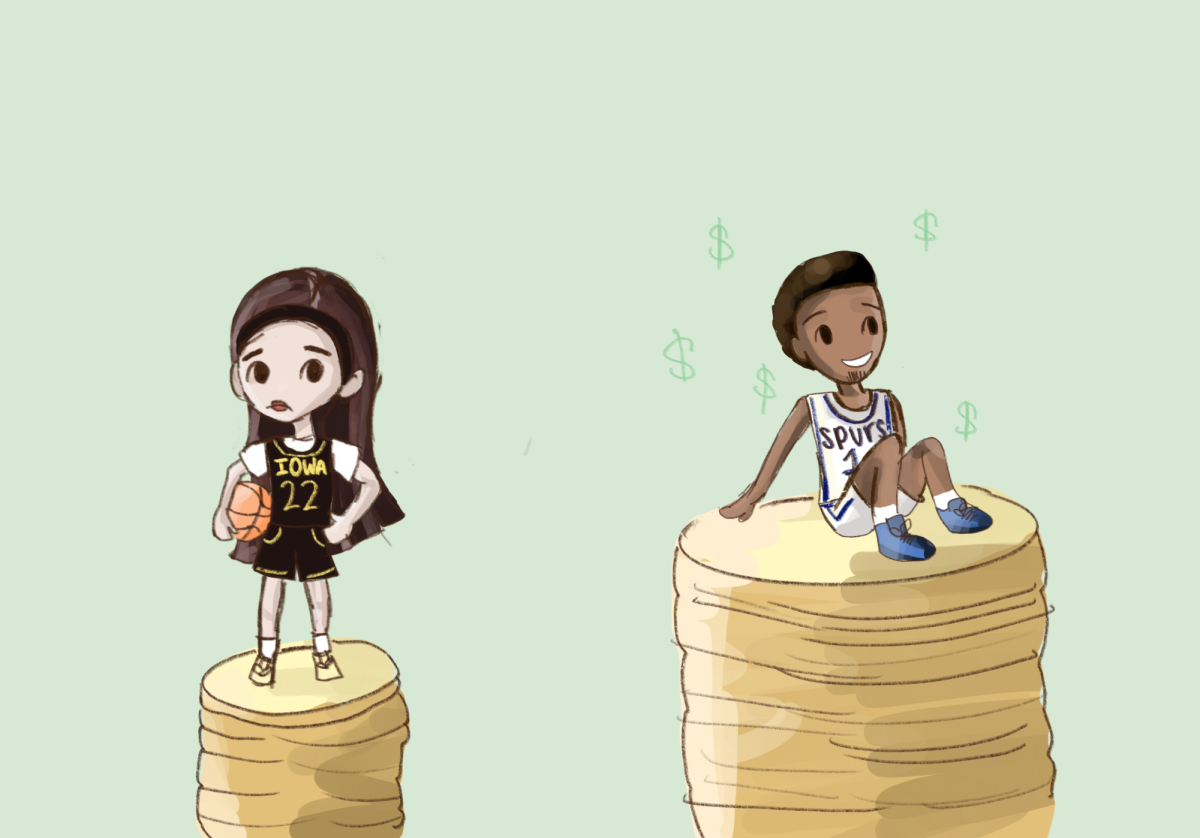Being on par with many of her male counterparts in the NBA and being the overall top scorer in NCAA Division I basketball for both men’s and women’s, one would expect athletes like Caitlin Clark — the No. 1 pick in the WNBA — to receive the same treatment male basketball players do. The surprising truth is that this is not the case, as Clark received a four-year, $350k contract with the Indiana Fever while her male equivalent, NBA No. 1 pick Victor Wembanyama, signed a four-year, $55 million contract, according to NBC.
Sexism is prevalent in many sports and can be exemplified in several ways, such as disproportionate attention and opportunities than their male counterparts, according to head cross country and track and field coach Brittany Frymire.
“Luckily, with being a coach I haven’t experienced the pay gap, but I have experienced not being hired because of my biological gender being female,” Frymire said. “So when they say that they’re hiring based on equitable decisions and hired someone who didn’t have the experience, it was rough. But I used that as a stepping stone for myself to know that I’m worth more than what that position was and that there was a better place for me to land than being at that job.”
In order to bridge the gender pay gap and other inequities in sports, female athletes should speak up about the unequal treatment they receive compared to their male counterparts and spread awareness as the first step in creating more enduring change. Girls’ basketball player and senior Emaleena Elson, who plans to play basketball at the collegiate level at Wellesley College, has spoken up about this disparity.
“I’ve been playing basketball a long time and in high school, I’ve noticed the girls’ games don’t normally get as much attention as the guys’ games,” Elson said. “Luckily this year, as we got moved up to D1, we started gaining more traction this year. But I feel like that’s an outlier year almost because in other teams I’ve been on, we would only get people coming to our games if there was a guys’ game after us.”
Some may argue that the pay gap between women’s and men’s sports relies simply on the fact that women’s sports don’t generate as much revenue or viewership as men’s sports. This difference exists within basketball, as the NBA brings in $10 billion a year in revenue, much greater than the WNBA’s $200 million per year, according to CNN.
However, even if the WNBA does receive less income and views, this difference is not significant enough to warrant Wembanyama receiving 137 times more pay than Clark, as the incomes and viewerships of each association do not proportionally match this pay gap, according to the World Sports Network. Factors such as sexism have played a role in the treatment disparity received between women’s and men’s sports, according to track and field athlete and sophomore Aykut Kilic. The deep-rooted claim that women are inferior to men has resulted in the pay gap, which exemplifies how being an advocate for women’s sports can mitigate this issue.
“My experience as a male track athlete has been largely positive, but I’ve also seen how gender inequality can play out in sports,” Kilic said. “While male sports teams often receive more resources and attention, female athletes sometimes have to fight harder for recognition and opportunities. It’s something that needs to change so that everyone, regardless of gender, has an equal chance to succeed in sports.”
Despite the disparities in recognition, women’s sports are gaining more visibility and popularity: this year’s NCAA women’s basketball championship games averaged 18.7 million viewers compared to the men’s 14.82 million, according to NPR. With women’s basketball bringing more recognition to the WNBA through power players like Clark, issues surrounding gender disparities in sports are also entering the limelight. In order to prevent events such as Clark and Wembanyama’s large pay gap from worsening, women athletes — who have already been speaking up for years about their mistreatment — should continue to advocate for better, more equitable treatment in an athletic setting.





